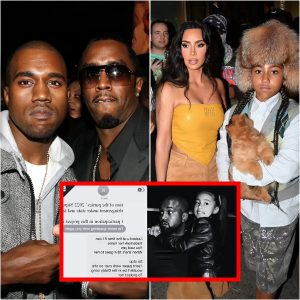The life and untimely death of Michael Jackson remain shrouded in mystery, speculation, and conspiracy theories, creating a narrative that captivates both fans and skeptics alike. Known as the King of Pop, Jackson’s status in the music industry was unparalleled, but behind the scenes, he was reportedly embroiled in conflicts with powerful figures such as Tommy Mottola, the former head of Sony Music. As whispers of betrayal and coercion echoed around him, Jackson’s final days took on a haunting undertone that suggests his demise was more than just a tragic accident.
In the months leading up to his death, Michael Jackson openly expressed feelings of paranoia and fear for his safety. Friends noted his heightened anxiety and a palpable sense that unseen forces were closing in on him. At that time, he made chilling proclamations regarding Mottola, labeling him a “devil” and suggesting that there were powerful individuals intent on silencing him. These statements weren’t just expressions of frustration or anger; they hinted at a much darker reality—a belief that his life was in jeopardy.

Jackson’s claims about being under surveillance and targeted by the music industry elite raised eyebrows, especially given the backdrop of contention with Mottola. The former Sony executive, who held immense power in the industry, became a focal point for Jackson’s accusations, particularly regarding manipulative practices that marginalized artists and maintained oppressive control over their careers.
Jackson’s concerns weren’t baseless grievances; there were indications that he understood the risks he faced. In one alarming revelation, he handed handwritten letters to his close friend, Michael Jacob, expressing fears that “someone was trying to unalive him.” These letters portrayed a man who felt trapped and vulnerable, providing a chilling document of a celebrity who sensed he was running out of time.
His frustrations extended beyond Mottola; he also felt extreme pressure from concert promoters, particularly AEG—responsible for his ill-fated 50-concert residency series at London’s O2 Arena. Jackson believed that the expectations from AEG were overwhelming, further heightening his emotional state and sense of vulnerability.
The launch of the “This Is It” tour was intended to be a triumphant return for Jackson, aimed at revitalizing his career and addressing his financial struggles. However, as rehearsals intensified, his physical and emotional condition deteriorated. Described as frail and increasingly anxious, Jackson struggled to maintain control over his life amidst the pressures of fame and the looming shadows of those he perceived as threats.
The involvement of Dr. Conrad Murray, his personal physician hired by AEG, became controversial following Jackson’s death. Murray was tasked with ensuring Jackson was fit for the demands of his tour, but he increasingly relied on sedatives, including a powerful anesthetic, propofol, to manage Jackson’s insomnia and anxiety. On June 25, 2009, just weeks later, Jackson died from an overdose, with the circumstances of his death raising many questions about negligence and intent.

Following Jackson’s death, legal repercussions quickly unfolded. Dr. Murray was charged with involuntary manslaughter, and during the trial, a myriad of theories surfaced, suggesting that Jackson’s demise may have been a calculated act orchestrated by powerful industry players. Fans and conspiracy theorists proposed that Murray was complicit in a larger scheme to eliminate Jackson, a man who had become too difficult to control.
Despite being convicted of involuntary manslaughter and sentenced to four years in prison, the leniency of Murray’s punishment spurred outrage among fans and family members, many of whom believed he should face harsher consequences for his role in Jackson’s death.
Michael Jackson’s life was a constant battle for control—of his music, his image, and ultimately, his very existence. His apprehensions about Mottola and the music industry’s elite painted a picture of a star increasingly beleaguered by the forces that once made him a superstar. Jackson’s valiant, yet ultimately tragic fight against these overwhelming powers resonates deeply, illustrating the darker side of fame where the price of success can lead to perilous consequences.
In retrospect, Jackson’s final tour, aptly named “This Is It,” serves as an eerie foreshadowing of his fate. His warnings—whether perceived as delusions or genuine insights—echo long after his departure, leaving fans to contemplate the extent of the infiltration of greed, manipulation, and abuse within the music industry.
As we reflect on his legacy, Michael Jackson’s story serves as a potent reminder of the often hidden struggles faced by artists in an industry ruled by powerful figures, those who may stop at nothing to maintain their grip. The lingering questions surrounding his death amplify the mystique of a life lived under scrutiny and fear, leaving an indelible mark on music history.
Michael Jackson was more than just a pop icon; he became a symbol of the complex interplay of talent, ambition, and the shadows lurking behind the glitz of the entertainment world. His journey ended tragically, but the whispers of conspiracy and the ties to unseen powers will forever color the narrative of his remarkable, yet troubled life.





